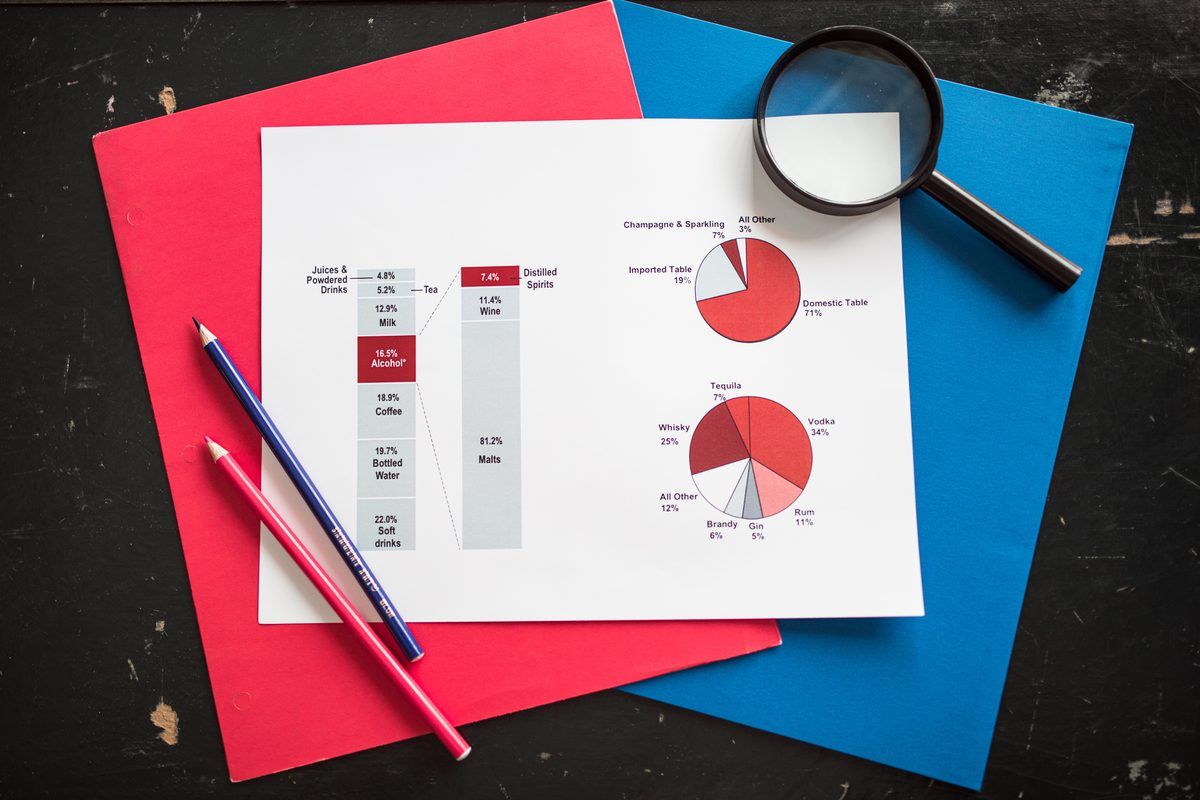It is important to learn the best business intelligence trends for 2022 because data went viral and became enormous. And just like that, we all gained access to the cloud. Spreadsheets have given way to actionable and informative data visualizations and interactive business dashboards. The democratization of self-service analytics has leveled the data product chain. Advanced analytics isn’t just for analysts anymore.
Business intelligence trends for the “new normal”
COVID-19 has made many companies reevaluate their current practices. Although the situation appears to be less serious and more long-term changes toward a “new normal” is on the way, day-to-day business is far from settled. Some firms are coping with last year’s order decline, while others are still adjusting to the ever-present supply chain disruptions or putting their operations in place for possible future problems.

Business intelligence trends show that organizations are still working to establish themselves for the long term and are concerned with the basis of their data usage. Instead, firms are tackling the fundamental causes of their problems (e.g., data quality) and the holistic creation of a data-driven culture.
What are the best business intelligence trends for 2022?
The exponential growth in data has already shown its value in the last few years. That is why organizations are anticipated to invest heavily in data-related solutions in the years ahead.
Businesses are no longer concerned if data visualizations improve analyses; they’re asking what the best approach is to tell each data narrative, especially utilizing cutting-edge BI dashboard technology. 2022 will be the year of data security and data discovery: clean and secure data combined with a simple but powerful presentation. It will also be a time when organizations collaborate on BI and AI initiatives. So let’s take a quick look to the best business intelligence trends.
Key takeaways
- Thanks to the growing popularity of work-from-home, many businesses have made room in their financial plans for cloud and SaaS usage.
- The most significant development is the growing need for data literacy, which many businesses now recognize.
- With NLP and automation on the rise, artificial intelligence is becoming more and more popular.
- Users can automate basic data science operations with self-service BI, but AI-driven collaboration allows data scientists to create low-code applications.
- The importance of information governance and confidentiality of personally identifiable information (PII) in 2022 will be crucial for establishing end-user trust.
Master data management/data quality
The reasons why data quality and data management are becoming increasingly important in the business sector are obvious: only correct and up-to-date data may lead to correct decisions. As a result, you must be able to trust that the information is accurate to make good judgments.
Master data management aims to combine and share data from multiple systems, such as customer, supplier, or product master data.
Data literacy
The ability to comprehend and utilize data as a collaborative tool that everyone in the organization can use is becoming increasingly important for corporate success. Data literacy will be one of the key data analytics topics to keep an eye on in 2022.
The term data literacy is used to describe a person’s ability to understand, read, write, and communicate data in a specific scenario. It implies comprehending the methods and approaches used to analyze the information and the tools and technologies employed.
One of the most significant internal barriers to success is poor data literacy. By 2025, data literacy will be a must-have and an essential component in creating corporate value. The advent of self-service BI tools for handling big datasets, continuous intelligence, artificial intelligence, and augmented analytics has brought data literacy to the forefront of a flourishing data-driven culture.
Data governance
In collaboration with data quality management and metadata, data governance will be one of the most important BI trends in 2022. Role-based access, authentication protocols, and auditing are all used to guarantee the quality of company assets. Users trust accurate, unique, up-to-date data when they know it is correct, which increases revenue and reputation.

A data governance strategy outlines the blueprints for managing corporate data assets, including process, operational infrastructure, and architecture. It establishes the solid foundation on which company-wide data management may take place. It enables businesses to take advantage of data management technologies, procedures, and personnel to provide complete, accurate, secure, and understandable information.
The worldwide data governance market, valued at $1.2 billion in 2016, is expected to reach $4.9 billion by 2026 with a CAGR of 22.6 percent over the next four years.
Data discovery/visualization
In recent years, data discovery’s importance has grown. BI experts have long acknowledged the importance of empowering business users.
Data discovery, in essence, is the process of gathering data from both internal and external sources and utilizing sophisticated analytics and visualizations to combine it all. Businesses may use this method to keep every relevant stakeholder informed about the data by allowing them to explore and change information intuitively while extracting practical insights. To do so, firms of all sizes use modern technologies such as business intelligence tools that provide:
- Data integration.
- Graphical representations.
- A user-friendly interface.
- The ability to work with enormous amounts of data efficiently and intuitively.
Visualization for data has become a top-notch method to present and interact with multiple charts on a single screen, whether it’s focused on selling charts or comprehensive interactive reports. The goal is to show that data discovery is a method for decision-makers to discover insights. By employing visualizations, teams can notice trends and significant outliers in minutes.
Self-service analytics
Many organizations have wanted for a long time to use self-service analytics, and it still has a high priority. Users demand data availability at all times, on any device, and anywhere.
Businesses are no longer focused on simply providing self-service options. They also want to make data access more accessible while assuring consistent and high-quality data and results.
Modern data warehouses
The old data warehouse architecture is too complicated to enable smooth progress and is frequently too costly. Furthermore, the implementation approach is out of date because it isn’t built and optimized for how you use analytics today.
More organizations recognize the new difficulties, potential, and possibilities that data warehouses provide. Data warehouse automation is an innovation within data warehouse technology. This saves time and automates ETL operation by removing manual processes.
Alerting
Notifications have long been a feature of analysis and BI, but the application has recently evolved dramatically. Notifications have always aimed to save time by ensuring that users pay attention.

The traditional method required a firm definition of relevance, and it has thus far failed to live up to expectations. Recent advancements in alerts have been made by moving from predetermined relevance to machine-made suggestions based on user behavior. It is mainly used with database marketing.
Analytics on real-time data
The necessity for real-time data has grown tremendously, and it will continue to do so in 2022 as one of the data analytics trends. We’ve seen that since the epidemic began that fast and precise information is essential in devising effective countermeasures. Some nations have utilized data to make the most outstanding judgments possible, while businesses have adhered to ensure their survival in these frightening times.
Real-time access to data is no longer restricted to businesses; the general public now has it. We may see press conferences brimming with the most up-to-date information, graphs, and statistics that have helped shape antiviral methods. But not only that, building ad hoc analysis has allowed enterprises to stay on top of changes and adjust to significant problems that this year has presented.
In both business and personal life, forecasting and alarms are becoming more important in generating appropriate company responses and strategies for future efforts with more variables to consider. Furthermore, using live dashboards will assist businesses in accessing up-to-date information about their operations and respond if any potential concerns arise immediately. High gear for data access is becoming the standard, which is why some businesses can continue to operate and others cannot.
In 2022, real-time data will be a significant factor in all types of company analytics, and we will see far more of it in practice.
Artificial Intelligence
The integration of Artificial Intelligence and machine learning is one of the most significant advances in BI. Dan Vesset, a specialist at IDC., has called it “an era of enhanced analytics,” declaring that the connection will lead to “the handing over of power and intelligence to businesses.” This bridge connects humans and machines.
Businesses are moving beyond static, passive reports of things that have already occurred to proactive analytics with dashboards that show what is going on at any given moment and provide alarms when something isn’t functioning properly. Solutions based on AI algorithms that employ the most sophisticated neural networks can detect anomalies with a high degree of accuracy since they learn from past trends and patterns. Any unusual occurrence will be swiftly recorded, and the system will notify the user in this way.
SaaS and cloud adoption
The COVID-19 epidemic put organizations and businesses in crisis mode as they tried to make sense of the situation. With on-premises technologies unable to keep up with the demands of a primarily remote workforce, several firms were compelled to evaluate their existing BI practices. More companies plan to migrate to cloud-based BI this year, whether on a private or public cloud or via SaaS software.

After the pandemic, many businesses have adjusted their budgets to make room for cloud infrastructure to facilitate remote and dispersed workforces. Gartner predicts that by 2023, 40% of all business workloads will be hosted in the cloud, up from 20% today. Businesses now see analytics as a critical mission-critical capability, and they are not shying away from adopting data technologies.
Data security
The EU’s GDPR (General Data Protection Regulation), the CCPA (California Consumer Privacy Act) in the United States, and the LGPD (General Personal Data Protection Law) in Brazil are just a few examples of privacy legislation that have been implemented. Data security is one of the most important business intelligence trends for 2022.
Furthermore, the European Court of Justice’s recent reversal of the legal framework known as Data Privacy Shield hasn’t made things easier for software firms. The Shield was a legal mechanism that allowed businesses to move data across borders between the EU and the USA. Still, with recent legal changes causing the termination of the procedure, companies based in the United States don’t have the authority to transfer any EU data subjects.
All of this considered, businesses have been compelled to invest in security to comply with the new laws while also protecting themselves from cybercrime. It is expected that worldwide spending on cybersecurity products will reach $1.75 trillion by 2025. This is not a surprise to the professionals. During 2020 and the beginning of COVID-19, businesses were compelled to transition from physical to digital, relying on internet services while leaving a vulnerability for cybercriminals to exploit.
Millions of cyber attackers are scouring the internet for a vulnerability to exploit in today’s world. The worst is that they strike both large and small businesses alike. There’s always the potential for a successful assault if your company hasn’t implemented certain security measures. Data security is more vital than ever due to the increasing number of cybersecurity breaches.
Collaborative BI
Isn’t it true that two departments are better than one? As connected interaction with others in real-time to discuss and exchange insights becomes more critical than ever, collaborative BI is becoming a BI trend. With distributed teams becoming the norm, remote collaboration will continue to be necessary.
Teams can interact with others in interactive reports and collaborative dashboards. Users may tag clients or other individuals in comments and share data assets through links, email, and Slack. Teams may decide the following steps, which cuts downtime to insight.
Conclusion
Many businesses are eager to take control of their data and make use of it. They also demonstrate that firms care about high data quality and efficient data usage.
This implies that businesses want to go beyond collecting as much data as possible, and instead be able to use high-quality data to make better decisions. This is also evidenced by the movement towards modernizing data warehouses.
What are your thoughts on these 2022 business intelligence trends? Did we overlook any BI trends? In the comments area below, let us know what you think!





